We’d launched IBM’s innovation Culture blog on Tumblr in 2012 to engage a wider, younger audience. Not long after, we learned something amazing. That researcher and mathematician Benoît Mandelbrot discovered ‘fractals’ while at IBM (1975) — one of IBM’s most significant, yet unknown achievements. So we honored Benoît and his captivating fractal legacy on IBMblr with fractal art, a video featuring Benoit (interviewed by Errol Morris) and the story behind his discovery, the ‘Fractalizer’ and even a fractal cake to celebrate what would have been his 89th birthday.
2015
:: Webby Awards /IBM Fractal Fest / Best Photography & Graphics / Winner
:: Webby Awards / IBM Fractal Fest / Corporate Communications / Nominee
:: Communication Arts Interactive Winner
http://www.commarts.com/interactive/cai15/ibmfractalfest.html
http://www.commarts.com/annuals/2015-Interactive
2014
:: Cannes Lions / Branded Content: Use of Social Media / Silver
:: Cannes Lions / Online Digital Design / Shortlist
:: Clio Awards / Digital/Social / Shortlist
:: ECHO Awards / Digital/Social / Shortlist
VIDEO:
Big Brains. Small Films.
Benoit Mandelbrot. The Father of Fractals.
VIDEO:
Fractal Fest Case Study
TUMBLR POSTS:
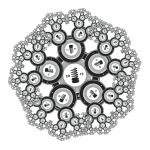
Love fractals? Your vote can help IBMblr take home the prize:
Social: Best Photography & Graphics
Social: Corporate Communications
ICYMI, here’s where you can turn your tumblr into fractals (desktop)[/image_with_text]
 What the Fractal?
What the Fractal?Forecasting trouble ahead
Hurricanes. Floods. Earthquakes. Volcanic eruptions. Nature’s big troublemakers are often outsmarted by the tiny fractal math formulas that help us minimize their destruction. By understanding fractal order and scale, scientists can forecast the size, location and timing of natural disasters, so we can better prepare for their arrival. Now, if only they could help us prepare for holiday credit card bills.
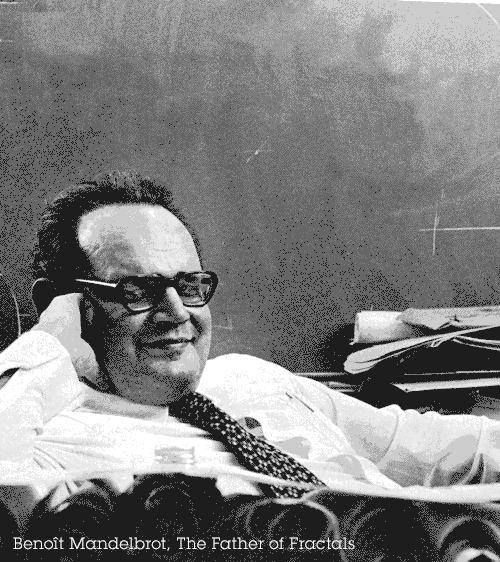
All day, we’re paying tribute to the late Benoit Mandelbrot and his amazing discovery of fractal geometry. Follow along as we share his last recorded interview and curate some of our favorite fractal art. And for a personalized fractal treat, grab your laptop and put your Tumblr through the Fractalizer, and watch your posts turn into fractals. Here’s to you Benoit!
 “Clouds are not spheres, mountains are not cones, coastlines are not circles, and bark is not smooth, nor does lightning travel in a straight line.”
“Clouds are not spheres, mountains are not cones, coastlines are not circles, and bark is not smooth, nor does lightning travel in a straight line.”
Benoît Mandelbrot
Fractal Inventor
IBM Fellow Emeritus
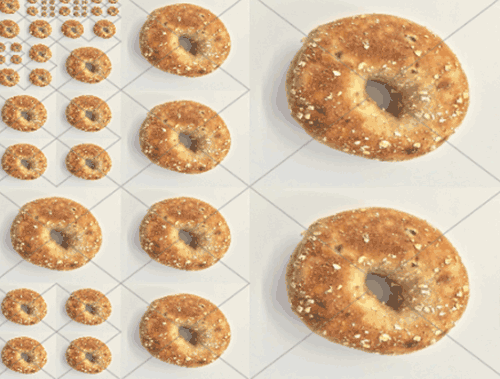 On Bagels and Benoit:
On Bagels and Benoit:
“Benoit once told me that the best tasting bagels are those with a fractal distribution of holes. If the bagels are cooked at the right temperature, the carbon dioxide generated by the yeast forms bubbles with a fractal distribution. So before you buy a bunch of bagels, cut one open, look at the different hole sizes, and they range from very small to very large, they were cooked properly. Of course, you can always taste one bagel before buying a bunch from the same batch. But that’s not the “fractal way” to judge your food.“
James Wynne
LASIK Pioneer, IBM Researcher
 What the Fractal?
What the Fractal?Keeping in touch
You don’t need to search hard to find a fractal at work. Just reach in your pocket. Fractals are the blueprints for the microscopic antennas found inside billions of cellphones. And the bangs and garbles that once interrupted conversations—you can give a shout out to Benoît Mandelbrot for silencing those through fractals, too. Now go call your mother.
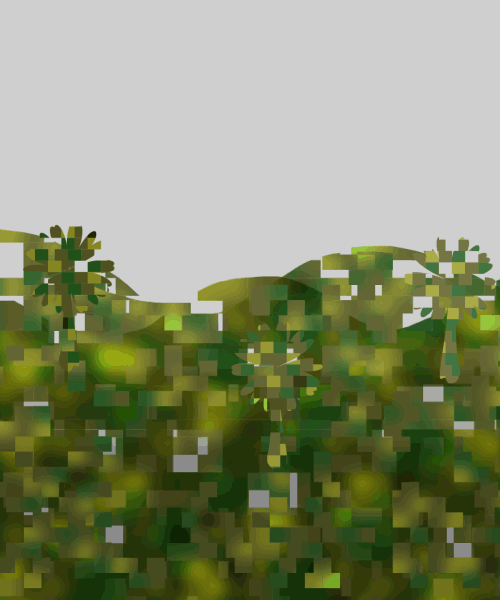 What the Fractal?
What the Fractal?Blending in
Most of the fractals around you go unnoticed. Sometimes by design. Take the fractals found in camouflage. By mimicking the colors and patterns found in nature, they out-fox even the sharpest of perceptions. So while camo colors may change to suit the surroundings, the design geometry remains the same. If only there was a version that lets you blend into the sofa when it’s time to do the dishes.

What do you get when you mix the genius of Benoit Mandelbrot and the design sensibility of Paul Rand? Our second Mandelbrot-Rand mashup.
 “Contrary to popular opinion, mathematics is about simplifying life, not complicating it.”
“Contrary to popular opinion, mathematics is about simplifying life, not complicating it.”
Benoît Mandelbrot
Fractal Inventor
IBM Fellow Emeritus
 What the Fractal?
What the Fractal?Finding a Cure
Fractals aren’t just beautiful to look at. They could be lifesavers, too. Fractal geometry is helping doctors detect the chaotically tangled growth patterns of cancer tumors when compared to the uniform patterns of regular healthy tissue. Could the end of cancer start with a simple fractal formula?
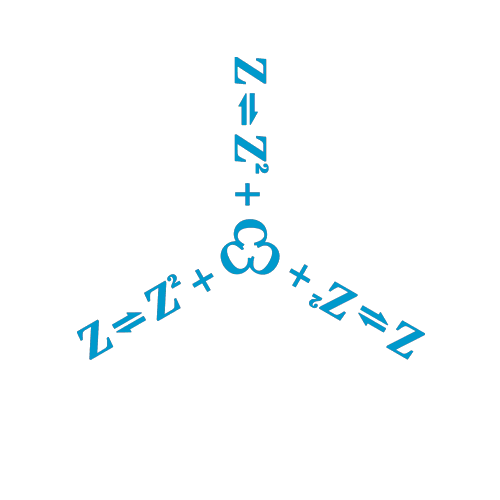 “People either think in formulas or think in pictures. And thinking in pictures only in science doesn’t take you very far. I was thinking in both.”
“People either think in formulas or think in pictures. And thinking in pictures only in science doesn’t take you very far. I was thinking in both.”
Benoît Mandelbrot
Fractal Inventor
IBM Fellow Emeritus
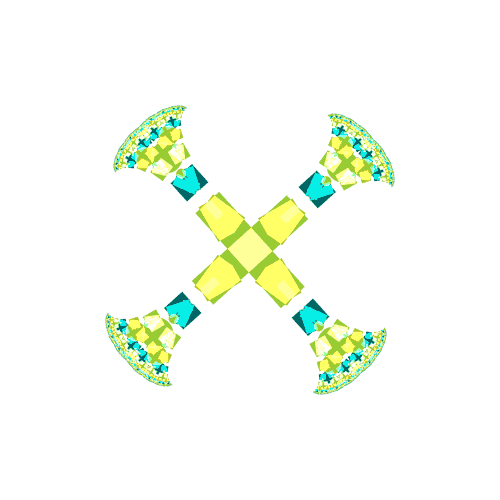 “My life seemed to be a series of events and accidents. Yet when I look back I see a pattern.”
“My life seemed to be a series of events and accidents. Yet when I look back I see a pattern.”
Benoît Mandelbrot
Fractal Inventor
IBM Fellow Emeritus
 Let It Snowfractals!
Let It Snowfractals!Holiday Card Fractal Generator
Save some postage. These snowflake fractal cards can make your holiday wishes go on, and on, and on, and on, and on, and on, and on, and…
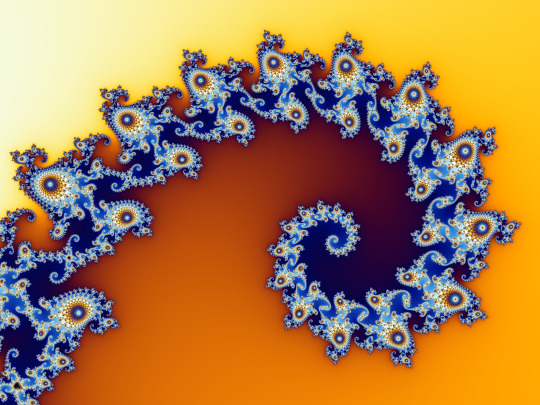
“When I want to show people a beautiful fractal image, I show a ‘seahorse’ from the colorized boundary of the Mandelbrot Set.”
James Wynne
LASIK Pioneer, IBM Researcher
From our Reddit AMA →
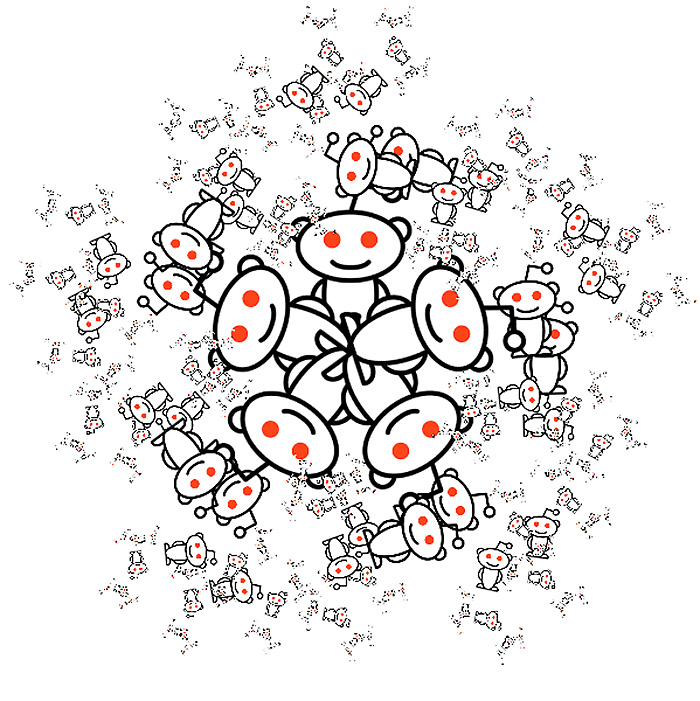
Got a question about Mandelbrot or fractals?
Join our live AMA on Reddit.
Today two of Benoit Mandelbrot’s closest colleagues will answering your questions about fractals and their discoverer. If you want a glimpse into Benoit and his life’s work, this can’t be missed.
10am to Noon EST: IBM Researcher James Wynne answers your questions about working with IBM Fellow Mandelbrot from 1971 to 2005.
Noon to 2pm EST: Yale University Professor Michael Frame takes your questions about teaching with Professor Mandelbrot from 1991 to 2010.
Find out how to participate here. And remember, AMA stands for “Ask Me Anything!”
 “Simple iteration appears to liberate the complexity hidden within it, thus giving access to creative potential.”
“Simple iteration appears to liberate the complexity hidden within it, thus giving access to creative potential.”
Benoît Mandelbrot
Fractal Inventor
IBM Fellow Emeritus
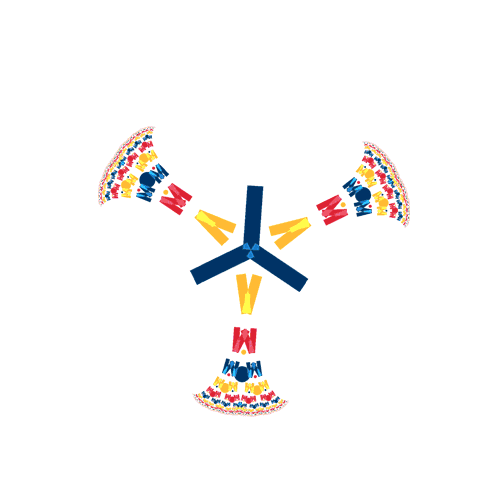 “One might argue that I was misplaced in going into science, but I do not think so. I was lucky to be able—eventually—to devise a private way of combining mathematics, science, philosophy and the arts.”
“One might argue that I was misplaced in going into science, but I do not think so. I was lucky to be able—eventually—to devise a private way of combining mathematics, science, philosophy and the arts.”
Benoît Mandelbrot
Fractal Inventor
IBM Fellow Emeritus
 Happy Birthday, Benoît B. Mandelbrot.
Happy Birthday, Benoît B. Mandelbrot.
Today we’re tipping our hat to Benoît Mandelbrot on his birthday, in honor of his historic discovery of fractals, as well as the many amazing innovations it inspired. We, as many others in the mathematics, science and technology worlds, salute you, Mr. Mandelbrot.
How might we be celebrating? With a delicious, chocolate fractal cake, of course!

